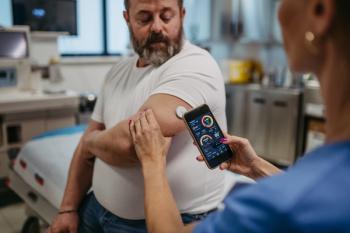
Non-commercial Pharmacies: The Missing Link in Breaking Down Barriers to Medication Access
Patient-centric models of medication delivery that provide cost, transparency, convenience, and accessibility solutions are vital for patients to successfully navigate the current health care system.
Every day, millions of Americans must make a difficult choice: Pay for food, rent, and necessities, or purchase costly prescription medications that are often for life-threatening diseases. Roughly
As a result, how we think about access to affordable health care and prescription medications is emerging as a central focus among government as well as advocacy, health care, and pharma industries alike. Patient-centric models of medication delivery that provide cost, transparency, convenience, and accessibility solutions will be critical for patients to successfully navigate our increasingly complex and convoluted health care system. And it reinforces why what the pharmacy industry does matters, because there’s a person behind every prescription.
Technology has the potential to transform medication access by creating an online, integrated hub of access, support services, and education, offering pharmaceutical choices at scale to patients nationwide. Paramount to this effort is the formation of partnerships with patient assistance programs (PAPs), delivered through the philanthropic arm of pharma manufacturers. According to a recent Congressional Research Service
That is significant when it comes to the power of ensuring no individual is left behind due to economic hardships. But PAPs don’t only provide financial assistance to households below the poverty level.
Each program has its own qualifications based on family size, income, drug price, insurance, and co-pays, which is critical for many middle-class households that also struggle to pay for prescribed medication. Some PAPs provide financial assistance for households 400% above the poverty line or for those with an annual income of more than $100,000 and a large family.
Although there are more than
Medication non-compliance leads to declining health, increased health care costs, and death. It is often the result of fundamental barriers such as cost and a lack of transparency regarding financial assistance, payment options and alternatives to brand names, as well as difficulty in navigating the medication journey due to a lack of time, resources, and medical literacy.
It’s expected those barriers may become increasingly complex as innovation turns specialty medications into market leaders. Advanced capabilities in genomic research have catalyzed the development of targeted medications for life threatening conditions, creating finely tuned therapies for cancer, cardiovascular, respiratory, and immune system diseases.
Although specialty medications total roughly 2% of prescribed drugs, they account for more than
In addition to a significant increase in cost, specialty drugs have a complex medication journey. Some require cold chain delivery for safe and effective use. Others must be administered through injection, infusion, or by a physician, who often have unique legal requirements and require ongoing patient monitoring and education. As innovation and advancements in targeted therapies move full speed ahead, we also need to align advancements in how we think about patient engagement and medication delivery.
We need to build patient-centric models around technology platforms that elevate accuracy, delivery, and access to medications. Non-commercial pharmacies—those that serve as a bridge between pharma manufacturers and patients to facilitate access to medication—are well-positioned to function as the missing linchpin in the health care system.
In fact, research shows
Non-commercial pharmacies can design services with patient engagement in mind. Qualified individuals can receive medications at no cost or a significantly reduced cost through partnerships with PAPs, which consider patients’ unique finances, insurance, co-pays, family size, and alternatives to brand medications.
Pharmacists can provide pharmaceutical counseling and education and monitor all drug interactions. Offering cash pay enables patients to bypass the complex and time-consuming process of securing drugs through insurance.
Expanding shipping services to include ambient and cold-chain delivery solutions can then accommodate the shipment of all medications. And by working with multiple carriers, non-commercial pharmacies can deliver nationwide with expedited services available.
Advancing care delivery and ensuring the patient and physician have all the resources they need to understand which treatment options are available at what cost is the goal. Providers play a key role in educating patients about PAPs and alternatives to brand name drugs.
This emphasizes the need to encourage physicians and their staff to extend conversations and ensure patients are aware of all the options available to receive their medication before they leave the physician’s office; however, physician availability has experienced greater constraints due to the COVID-19 pandemic. In this case, pharmacist consultation services provided by non-commercial pharmacies can assist in educating patients about prescriptions, available alternatives, and payment options.
Although patient-physician connectivity is critical—particularly for patients with advanced disease states that require complex medication regimens, careful monitoring, decision-making, and treatment plans—we must continue to raise awareness among patients as well. But with a dynamically diverse population, education efforts must be culturally and generationally sensitive, and consider how different groups of people prefer to receive their information, through which venues, and from whom.
For example, the younger generation often prefers to receive digital information through social media, which presents an opportunity for the pharma industry to expand its presence on these platforms. For older generations, partnerships within the clinical community and non-ambulatory settings, such as elder care facilities, can be an effective method to reach aging populations who depend on life-sustaining medications and often have limited, fixed incomes. To reach underserved communities, partnerships with community-based organizations that are deeply embedded in those communities and serve as trusted sources of information can be pivotal to educate minority populations.
As health care and prescription medications advance in complexity, access will continue to be a fundamental area of concern. Leveraging digital technology provides a gateway to improved access, adherence, and health outcomes, and it allows us to meet patients where they are geographically and accommodate their preferred methods of communication. Non-commercial pharmacies can seamlessly integrate these key initiatives and serve to unify a collaborative partnership with pharma manufacturers and providers to secure a future with medication access and improved health for all.
Newsletter
Stay informed on drug updates, treatment guidelines, and pharmacy practice trends—subscribe to Pharmacy Times for weekly clinical insights.


















































































































































































































